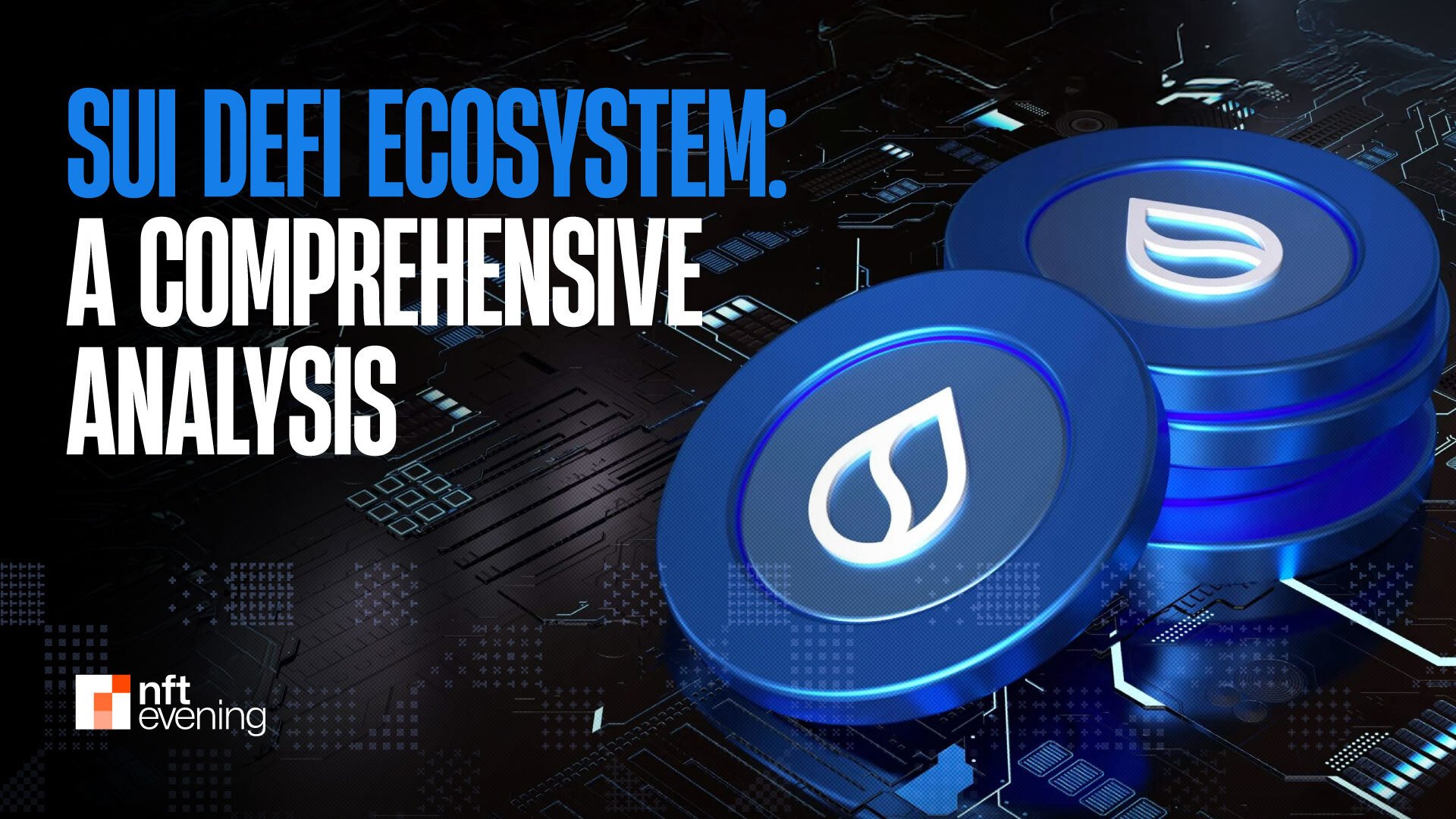Unlocking Rapid Growth: Strategic Positioning for Business Success

Sui: A Rising Star in the Decentralized Finance Ecosystem
The decentralized finance (DeFi) sector is rapidly changing, with various Layer-1 blockchains competing for dominance. Among these, Sui has emerged as a noteworthy contender. Launched in May 2023 by Mysten Labs, a company founded by former Meta engineers, Sui has quickly established itself in the market. Utilizing an innovative object-centric data model and the Move programming language, Sui is positioned to make significant strides in the DeFi arena.
- Sui: A Thriving DeFi Ecosystem
- Decentralized Exchanges (DEXs)
- Cetus Protocol (CETUS)
- Turbos Finance (TURBOS)
- Aftermath Finance (AF)
- Momentum DEX (MMT)
- KriyaDEX (KDX)
- Lending & Borrowing Protocols
- Suilend (SEND)
- NAVI Protocol (NAVX)
- Scallop (SCA)
- Liquid Staking Derivatives (LSDs)
- Stablecoin Integration
- Other Applications and Infrastructure
- Strategic Growth: Partnerships, UX, and Future Vision
- Strategic Partnerships and Institutional Integration
- User Experience (UX) and Developer Enablement
- Future Roadmap and Development Plans
This article examines the swift growth of the Sui ecosystem, particularly in DeFi, gaming, and Non-Fungible Tokens (NFTs). The expansion is reflected in impressive Total Value Locked (TVL) figures and increasing user engagement. Additionally, Sui’s strategic partnerships with key institutional players and a well-defined development roadmap further solidify its market position.
Sui: A Thriving DeFi Ecosystem
Sui’s architecture supports high-speed lending, trading, and staking services. The DeFi sector has witnessed remarkable growth, with TVL skyrocketing from around $25 million at its inception to over $2 billion by May 2025, making Sui the third-largest non-EVM chain by TVL.
By June 2025, Sui’s DeFi TVL had surpassed $1.7 billion, outpacing established projects like Avalanche and Polygon. The volume of stablecoins on Sui has also surged, increasing from $400 million in January to nearly $1.2 billion by May 2025, with monthly stablecoin transfers exceeding $70 billion.
The cumulative trading volume on decentralized exchanges (DEXs) within Sui has exceeded $110 billion, with an average daily trading volume of approximately $250 million, showcasing significant trading activity. Sui’s DeFi sector is characterized by rapid transactions and capital efficiency, making it suitable for a variety of financial operations.
Decentralized Exchanges (DEXs)
Cetus Protocol (CETUS)
Cetus is a leading DEX on Sui (and Aptos) that employs a Concentrated Liquidity Market Maker (CLMM) model, akin to Uniswap V3. This approach allows liquidity providers to concentrate their assets within specific price ranges, enhancing capital efficiency and minimizing slippage for traders. Cetus also includes a “Super Aggregator” to find the best prices across the Sui network and offers a developer SDK for seamless integration.
Turbos Finance (TURBOS)
Turbos Finance has gained prominence as a DEX known for its rapid growth and strong support for meme tokens within the Sui ecosystem. The platform emphasizes innovative trading mechanisms and extensive listings, positioning itself as a key liquidity provider and a driving force in the meme coin market on Sui. It has remained secure and unaffected by exploits, thanks to its independent codebase.
Aftermath Finance (AF)
Aftermath Finance aims to deliver a centralized exchange-like experience entirely on-chain. The platform features multi-asset liquidity pools, a smart-order router for efficient trading, and liquid staking derivatives (afSUI). It integrates various DeFi products, including a DEX aggregator, yield farming, and cross-chain bridging, striving to be a comprehensive solution for Sui DeFi.
Momentum DEX (MMT)
Momentum DEX is the first ve(3,3) decentralized exchange combined with a token launch platform on Sui. Its unique tokenomics model aligns incentives among liquidity providers, traders, and protocols, ensuring that all emissions, trading fees, and rewards are directed to users. Momentum also plays a crucial role in minting stablecoins on Sui, establishing itself as a vital infrastructure component.
KriyaDEX (KDX)
KriyaDEX is a versatile DeFi protocol that offers a range of functionalities, including Automated Market Making (AMM), limit orders, leveraged perpetual contracts, and strategy vaults. It focuses on delivering fast, efficient, and low-cost transaction services, catering to professional traders with features like up to 20x leverage on perpetuals and on-chain dollar-cost averaging (DCA).
Lending & Borrowing Protocols
Suilend (SEND)
Suilend serves as a comprehensive platform that integrates essential DeFi services, making it a “one-stop-shop” for users. Key features include:
- Lending & Borrowing: Users can deposit supported cryptocurrencies to earn interest or borrow against their holdings, all facilitated by Sui’s high-speed, low-fee blockchain.
- Liquid Staking (SpringSui): Users can stake their SUI tokens and receive sSUI, a yield-bearing liquid staking token that can be utilized in other DeFi activities. SpringSui is notable for its instant unstaking feature, enhancing liquidity and security.
- Token Swapping (STEAMM): Suilend includes its own Superfluid AMM called STEAMM, allowing users to swap tokens efficiently within the platform, reducing transaction fees and simplifying the user experience.
- Cross-Chain Bridging: Powered by Wormhole, Suilend enables seamless asset transfers across major blockchains like Ethereum, Solana, and Polygon, allowing users to bring assets into the Sui ecosystem.
NAVI Protocol (NAVX)
NAVI is the first native liquidity protocol in the Sui ecosystem, offering a comprehensive solution for lending, borrowing, and leveraged yield farming. It supports various mainstream assets (WBTC, WETH, SUI) and aims to function as a user-friendly decentralized bank on Sui, known for its capital-efficient and dynamic lending interest models.
Scallop (SCA)
Scallop is a leading DeFi protocol designed for peer-to-peer lending and borrowing. It features a robust money market with high-interest lending and low-fee borrowing. As the first DeFi protocol to receive an official grant from the Sui Foundation, Scallop emphasizes institutional-grade security and regulatory compliance.
Liquid Staking Derivatives (LSDs)
Several protocols are facilitating liquid staking on Sui:
- SpringSui (by Suilend): Offers sSUI, recognized for its instant unstaking feature, which enhances liquidity and mitigates depegging risks.
- Aftermath Finance: Provides afSUI and integrates liquid staking into its broader DeFi platform.
- Volo: Offers vSUI as its liquid staking derivative.
- Haedal Protocol: The first liquid staking solution built on Sui, providing haSUI and actively expanding its integration across major exchanges and DeFi platforms.
Stablecoin Integration
Sui boasts a diverse and expanding array of stablecoins, including native USDC, USDY (yield-bearing), AUSD, and FDUSD, which collectively represent a significant portion of the network’s stablecoin market cap. This variety enhances liquidity for DeFi applications and supports in-game economies.
Other Applications and Infrastructure
Sui’s adaptable architecture supports a wide range of applications beyond DeFi and gaming:
- Social dApps: Projects like Releap Protocol (a fully decentralized social graph), FanTV, and Real Vision leverage Sui for tokenized user rewards, fostering interactive community engagement.
- Wallets: Various wallets support the Sui ecosystem, including Phantom, Slush (SUI Wallet), Backpack, Ledger, Binance Wallet, Coinbase Wallet, SafePal, Bybit Wallet, Suiet Wallet, Martian Wallet, and Ethos Wallet.
- Cross-chain Bridges: Sui integrates with Axelar and Wormhole, facilitating interoperability and the transfer of value and information across multiple blockchains, including Ethereum and Solana.
- Oracles: Services like Pyth, Stork, Supra, and Switchboard connect on-chain smart contracts with off-chain data, enhancing functionality.
- RPC Node Providers: Infrastructure providers such as Ankr, RockX, NOWNodes, PublicNode, and Triton One offer RPC services essential for dApp development and operation.
- Developer Tools and SDKs: Sui provides a developer-friendly environment with tools, libraries, tailored SDKs, and extensive community support, including forums, tutorials, and hackathons.
- Blockchain Explorers: Tools like Sui Explorer and Suivision allow users to monitor network activity, track assets, and debug smart contracts.
- Sui Name Service (SuiNS): This decentralized naming protocol enables users to register human-readable names (e.g., yourname.sui) that map to complex wallet addresses and smart contracts.
Strategic Growth: Partnerships, UX, and Future Vision
Sui’s dedication to widespread adoption and long-term sustainability is evident in its strategic focus on partnerships, user experience, and a clear future roadmap.
Strategic Partnerships and Institutional Integration
Sui’s growth is significantly bolstered by strategic partnerships and institutional integrations, signaling strong confidence and a pathway for large-scale capital influx. These collaborations are vital for embedding Sui within traditional finance (TradFi) and mainstream Web3 infrastructure.
- Institutional Custody & Access: Collaborations with Fireblocks enhance institutional-grade custody and access to DeFi.
- RWA Tokenization: Partnerships with 21Shares aim to develop financial products and accelerate Real-World Asset (RWA) tokenization, providing access for both institutional and retail investors.
- Cross-Chain Liquidity: Integrations with Wormhole and OKX Wallet are crucial for enhancing cross-chain liquidity and user engagement.
- Secure Self-Custody: Integration with Ledger offers secure self-custody and staking options for SUI.
- TradFi Bridges: Projects like Ondo Finance are launching tokenized U.S. Treasuries on Sui, while ATHEX Exchange explores on-chain fundraising, demonstrating efforts to bridge TradFi with Web3. A recent partnership with Microsoft positions Sui for deeper blockchain integration in enterprise applications.
This focus on established players and interoperability mitigates risks for the platform, attracting capital and legitimizing Sui’s standing in the global digital asset landscape.
User Experience (UX) and Developer Enablement
Sui’s design philosophy emphasizes a seamless user experience and a developer-friendly environment to encourage adoption beyond crypto enthusiasts.
- Simplified Onboarding: Initiatives like ZK Login allow users to access dApps using familiar web credentials, significantly lowering barriers for mainstream audiences.
- Robust Developer Support: Sui offers comprehensive tools, libraries, and strong community support, including forums and hackathons, to facilitate developer engagement. The “Move Accelerator” program further aids developers in mastering the Move programming language.
This commitment to reducing friction for both users and developers fosters a “virtuous cycle of growth,” essential for mass adoption and positioning Sui as a platform for everyday applications.
Future Roadmap and Development Plans
Sui’s future roadmap emphasizes ongoing ecosystem expansion and refinement, guided by several strategic priorities.
First, deepening DeFi remains a key focus. Plans include exploring synthetics, Real-World Assets (RWAs), and stable yield opportunities. The Sui Foundation’s multi-million dollar DeFi Ecosystem Growth Fund aims to support builders and enhance liquidity while driving long-term protocol adoption.
Second, scaling GameFi and creator platforms is crucial. The anticipated launch of the SuiPlay 0X1 gaming device is expected to catalyze demand for new play-to-earn games, potentially attracting adaptations of popular blockchain games to Sui.
Additionally, technical enhancements are in progress, including Layer 2 improvements leveraging Zero-Knowledge (ZK) technology for faster and cheaper transactions. Ongoing upgrades to the core network, such as Mysticeti v2, are also planned.
Finally, Sui continues to focus on community and institutional engagement. Efforts to attract institutional capital and enterprise solutions are ongoing, supported by active community involvement through hackathons, educational programs, and community hubs.
Analysts generally predict that SUI prices will rise by 2029-2030, with forecasts ranging between $6 and $12, driven by its speed, scalability, and low fees. Overall, the long-term outlook remains optimistic, positioning Sui as a potential leader in emerging AI-related niches and a challenger to established Layer-1 blockchains by the end of the decade.






